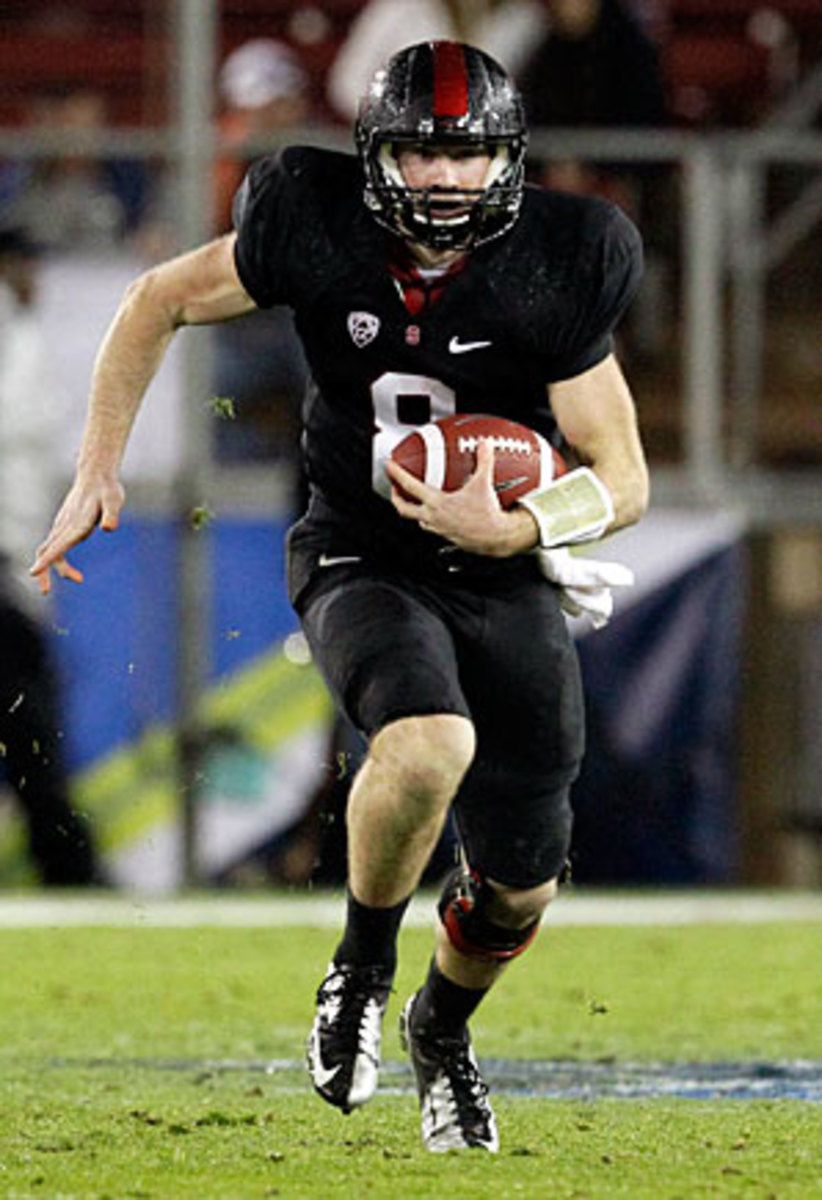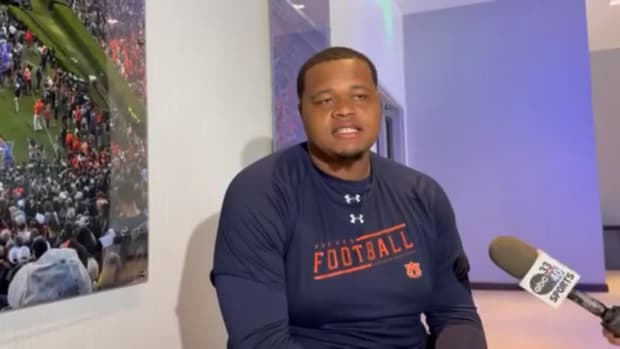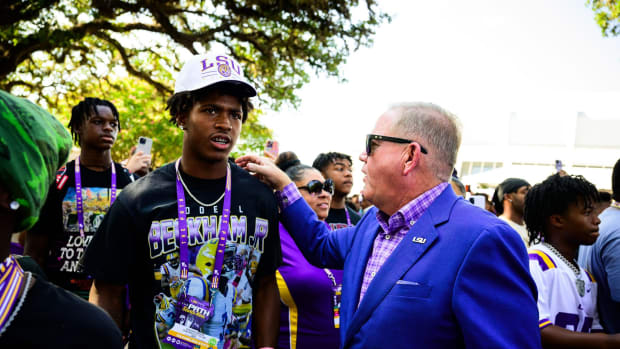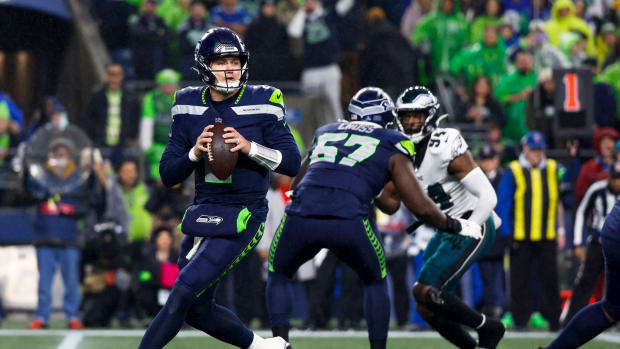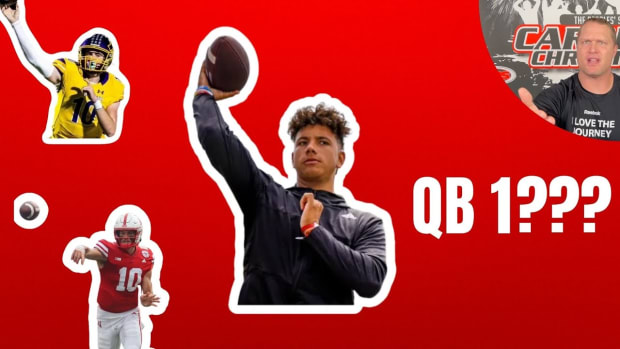Kevin Hogan sparked Stanford's Rose Bowl dreams
PALO ALTO, Calif. -- Stanford coach David Shaw spent eight months this offseason answering questions about life after Andrew Luck. He often deflected them by focusing on the Cardinal's strong defense and running game, or by repeating some variation of the mantra that Stanford football isn't defined by one player.
"There is a sense amongst our team that people will want to discount us because Andrew's not here," Shaw said during spring practice. "Without that being our sole purpose, to prove people wrong, that's an added thing for us which is, hey, we're a good football team."
The Cardinal proved us wrong, all right. Seemingly every preseason forecast predicted that USC or Oregon would emerge as the Pac-12 champion. Instead, Stanford will represent the conference in Pasadena on Jan. 1 against Big Ten champ Wisconsin.
MANDEL: Stanford-Wisconsin Rose Bowl preview
But in one respect, even Shaw was taken by surprise. He couldn't foresee that the difference-maker who would push the Cardinal from a possible eight- or nine-win team to an 11-2 league champ would be a redshirt freshman who spent most of the season on the sideline.
Kevin Hogan had thrown one pass in eight games when he came in for the third series of the Cardinal's Nov. 3 game at Colorado. Stanford was 6-2 at the time, thanks in large part to its dominant defense, but it was struggling to find an offensive rhythm. It put up just 256 yards in a 24-17 win over 2-6 Washington State the week before. At the time, the plan was for season-long starter Josh Nunes to handle the first two series against the Buffs, then let the more fleet-footed Hogan -- who'd seen a handful of snaps as a Wildcat-type quarterback in previous games -- play the next two. Nunes was completing just 53 percent of his passes, but coaches had stuck with him for his command of Stanford's dense playbook.
"There was still some uncertainty [with Hogan]," said offensive coordinator and quarterbacks coach Pep Hamilton. "You didn't know if he could handle a progression read. You didn't know if on third down he had the poise to stand in the pocket and deliver an accurate pass. The one thing we knew he could do -- he could run."
After Stanford punted on Nunes' two series, Hogan came in and led the Cardinal on four straight touchdown drives in an eventual 48-0 win. Hamilton was sold when, on Hogan's second series, the redshirt freshman recognized the Buffs had seven defenders in pass coverage on third-and-nine from Stanford 36. Hogan looked off his primary receiver and took off running for a 20-yard gain.
"By then, it was a moot point. There was no way we could pull him out," said Shaw. "The energy he gave us as an offense, as well as being proficient with the rest of the game -- he showed us he could do all that. Given his athletic ability, he had to be the starter."
In his first start on Nov. 10, Hogan threw a go-ahead 13-yard touchdown pass to tight end Zach Ertz with 5:07 remaining to beat then-No. 13 Oregon State, 27-23. The next week, he completed 25-of-36 passes in the Cardinal's 17-14 overtime upset of 10-0 Oregon. A 35-17 win at UCLA set up a rematch in Palo Alto six days later, where Hogan threw a game-tying 26-yard touchdown to Drew Terrell early in the fourth quarter of an eventual 27-24, Rose Bowl-clinching victory. Playing in a torrential downpour, Hogan earned MVP honors on that night.
By the end of the stretch, he'd completed a staggering 72.9 percent of his passes for nine touchdowns and three interceptions. By comparison, Luck notched a 56.3 completion percentage with 13 touchdowns and four picks as a redshirt freshman (albeit over an entire season).
"I can't say there was a defining moment in practice or training camp that led us to believe this kid could go out and beat four Top 25 teams, be the MVP of the Pac-12 championship game and lead us to the Rose Bowl," said Hamilton. "Talent prevailed. He has 'it,' and I define 'it' as instincts and talent. You cannot coach those two attributes."
FENG: Examining Wisconsin's offensive evolution, mission for Rose Bowl
A Northern Virginia native who played at Gonzaga College High in Washington D.C., Hogan was the first prospect Hamilton recruited upon joining Stanford's staff in 2010. At the time, the 6-foot-4, 200-pound athlete "was extremely raw," according to Hamilton, who was formerly the Chicago Bears' quarterbacks coach. "In a sense, he was the clay. I felt like I could mold him, but I knew it would take a little bit of time."
In other words, Hogan didn't figure to play for at least a couple of years. The quarterback was such an afterthought, in fact, that he attempted just three passes in the Cardinal's 2012 spring game. But Hogan started to make his move in preseason camp, eventually jumping Brett Nottingham as the No. 2 quarterback on the depth chart.
"In training camp, Kevin showed us his abilities and his skills, and the bigger the [playbook] installation got, to be honest, he also showed us that he wasn't quite ready," said Shaw. "But he got us excited. He wasn't quite ready for the first quarter of the season."
Hogan saw his first game action during the fourth week at Washington, when he carried once for five yards in a game Stanford lost, 17-13. He continued to see limited situational plays the next several weeks, allowing the coaches to dust off the shotgun quarterback run plays used early in Luck's career. (The Colts rookie rushed for a combined 807 yards his first two seasons.) Hamilton estimates he had called 80 percent fewer designed rollouts than last season with Nunes under center, but Hogan's first career pass came on a bootleg sprint out of a bunch formation against Cal. He faked a handoff, rolled nearly all the way to the right sideline and found tight end Levine Toilolo for a nine-yard touchdown.
The play provided a glimpse of how Hogan's athleticism would help transform Stanford's offense. Before he became the starter, defenses crowded the line in an attempt to stuff running back Stepfan Taylor. After, they had to account for the possibility of Hogan breaking to the perimeter. When receivers are covered, Hogan often buys extra time and checks down to Taylor for a short completion. Or, he simply takes off.
"The dynamic we were missing the most," said Hamilton, "was the quarterback's ability to improvise."
PAULINE: NFL draft prospects to watch in Rose Bowl
Since Hogan took over, Stanford's offense has dramatically improved on third down. It's jumped from a 35.6 conversion percentage to a 48.5 percent mark, and from a 4.59 yards-per-play average to a 6.15 total, according to ThePowerRank.com. The Cardinal have also scored touchdowns on 13-of-17 red zone opportunities, as opposed to 16-of-31 without him.
For his part, Hogan seems entirely indifferent to his ascension. Quiet but self-assured, he frustrates reporters with his general nonchalance and short answers to their questions. Asked what he might have said in August if someone told him he'd be starting in the Rose Bowl, Hogan managed a half-smile. "I don't know," he said. "That'd be cool?" Asked whether he'd experienced any nerves prior to that game at No. 1 Oregon, he offered, "No. It's just football." So the thought of playing in front of 94,000 spectators and more than 10 million television viewers against Wisconsin? "Just football," he said.
Come game time, however, that seemingly dispassionate demeanor helps him block out distractions.
"He's awesome. He's just cold-blooded," said Cardinal offensive tackle David Yankey. "Nothing fazes him. He's cold-blooded, and I love it."
There's a lot to love at Stanford right now. The program has gone 34-5 over the past three seasons, tied for the nation's third-highest winning percentage (.872) during that span. After a meager home showing for the Pac-12 championship game, the school has sold nearly 40,000 tickets for the Rose Bowl, its third consecutive BCS berth. Shaw recently signed a long-term extension to squash speculation that he might leave for the NFL like predecessor Jim Harbaugh, and the Cardinal stand to bring back as many as 17 starters next season, including 10 from the third-ranked rushing defense in the FBS.
And perhaps best of all: They've likely found their quarterback for next year and beyond.
"I wouldn't say I'm surprised," Shaw said of Hogan's emergence. "But he got there a lot faster than I thought he would."
As a result, Stanford will play in its first Rose Bowl in 13 years in a season when almost no one thought it would.
